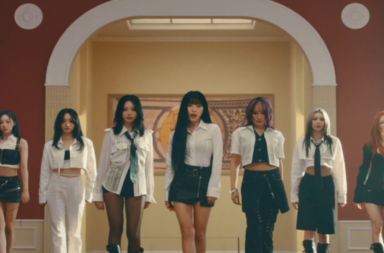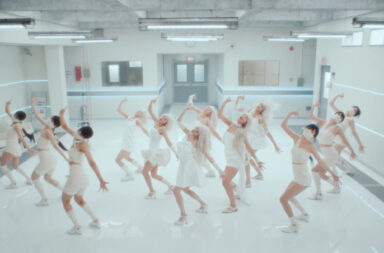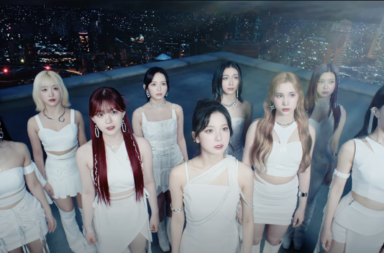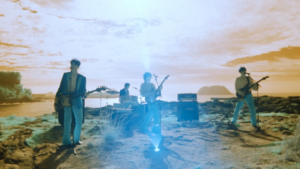
After years spent apart and on hiatus after a legal dispute with their former agency, J&Star Company, The Rose are finally and officially back with their first full-fledged comeback since then, entitled Heal. A follow-up to pre-release track “Childhood,” Heal’s title track, “Sour,” sticks heavily with themes of rebirth, togetherness, and “healing,” much like the album’s title suggests.
A pop-rock track with light synths to soften the guitar and drums and subtle vocal effects to add a sense of airiness, “Sour” leans melancholy through and through. Although the song’s lyrics allow for a broad interpretation of its meaning, they could be a subtle reference to the group’s two-year hiatus, considering the context in which the album was made. The lyrics are artistic and symbolic, yet call back to a period of time spent away from someone loved and cherished — perhaps in reference to The Rose’s own years spent apart (“My heart’s so sour without you”). They also have a romantic lean, with lyrics like “Every day I’ll wonder what you’re like/When you touch my lips,” leaving the track’s literal meaning slightly ambiguous.
The beauty of the song’s MV, however, is that it does not seek to solve or clarify the ambiguity of its lyrics, a typical trait of The Rose’s MVs. Much like the pre-release track “Childhood,” the MV for “Sour” takes the symbolic route, only this time using unique color grading techniques, sets, and cinematography to tell the track’s story.
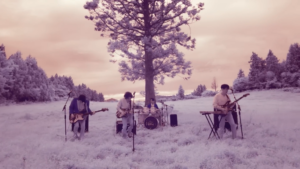
Although the MV’s format wholly revolves around the members playing their instruments, it has an obviously different and striking concept right out the gate. As the camera pans over the group playing their instruments on a cliff by the ocean at the start of the song, the entire scene’s unexpected coloring becomes apparent. In this particular setting, the members’ clothes appear warm-toned, and orange- and red-tinted, while their skin and hair appear devoid of color, practically blue like the sky and ocean. The coloring choices appear to be a direct representation of the song’s lyrics, as they sing:
I’ll never know how sweet you taste
I let you go and slip away
I know it hurts but it’s the truth
My heart’s so sour without you
The lack of warmth in the color of the members’ faces and overall bodies, aside from their clothes, is symbolic of the words they sing at this moment — as their heart turns sour without the person they love, they turn blue, much like someone would if their heart turned “sour” in the literal sense.
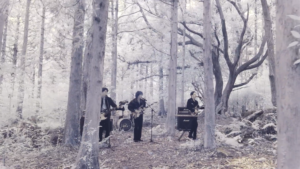
These carefully crafted yet beautifully executed coloring choices continue and evolve throughout the MV. When the first chorus hits, the scene switches to a forest setting, and this time the background itself is completely lacking in and contrasting in color, making the trees and ground behind The Rose appear white, as if it were winter. The sky looks orangish-pink, matching the members’ shirts and faces to make the white of the trees and ground stand out even further. Unlike in the previous contrasting scene where the members’ bodies appear blue and devoid of any warmth, the setting itself is now lacking in warmth, suggesting that that “sour” feeling has spread beyond just themselves and into the world around them.
A stark contrast hits at the beginning of the second verse, sung by Dojoon. The group is now performing and playing their instruments in a new forest, this time colored as it would expectedly appear in real life, with green trees, a brown, dirt ground, and the members’ appearing as they normally would. However, once the second chorus begins, all color is swept away from the same scene and setting, with the MV almost appearing in a black-and-white gradient tone. The symbolism in these color changes and grading is all to suggest that even when one thinks that all has been restored, that “sour” feeling of missing something or someone can creep back in, with a greater and stronger vengeance than ever.
When the instrumental break, championed by expansive synths, hits later in the track, the mood changes again as cinematography and color take front and center. As the vocals pause and the synths soar, so does the shot — literally — as the camera itself soars out and over the band performing on the cliff by the ocean, then the grassy forest setting. Wide, overhead shots circle around The Rose and the various performance settings, and color is restored, this time brighter and more vibrant than in any previous shots in the MV. Likely symbolic choices again, the more saturated hues and energetic shots suggest another mood change — perhaps a rebirth for the group (like in “Childhood”) now that they are back together again.
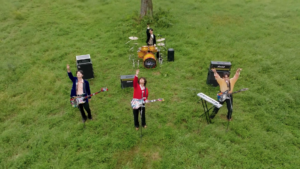
The MV closes out with The Rose performing on the cliff by the sea like in the first verse, again with contrasting color grading where the members are cool-toned while their clothes and most of the setting behind them are warm-toned. Although the MV ends on the same visual note with which it started, pockets of color and cinematographic changes here and there represent a greater story within the context of the track and Heal as a whole — most importantly, that The Rose is better, stronger, and more vibrant when they’re together.
